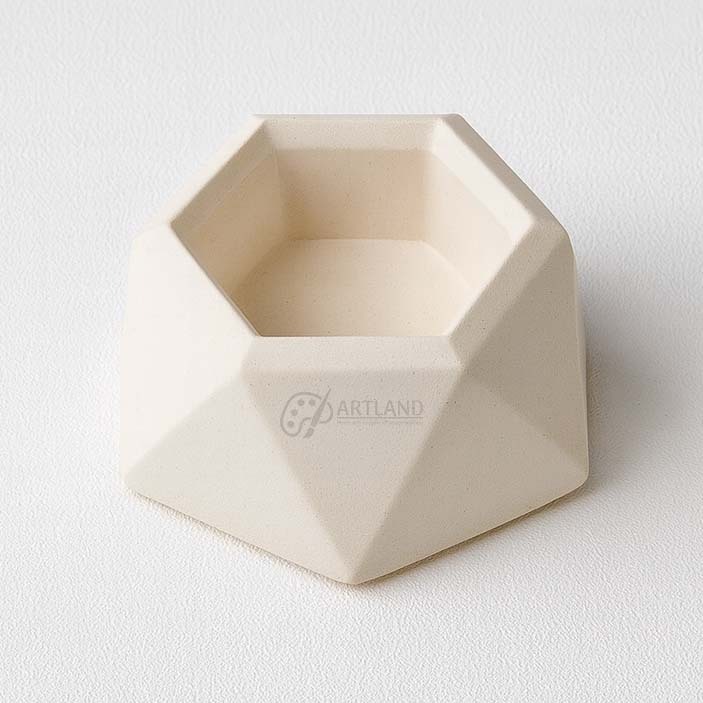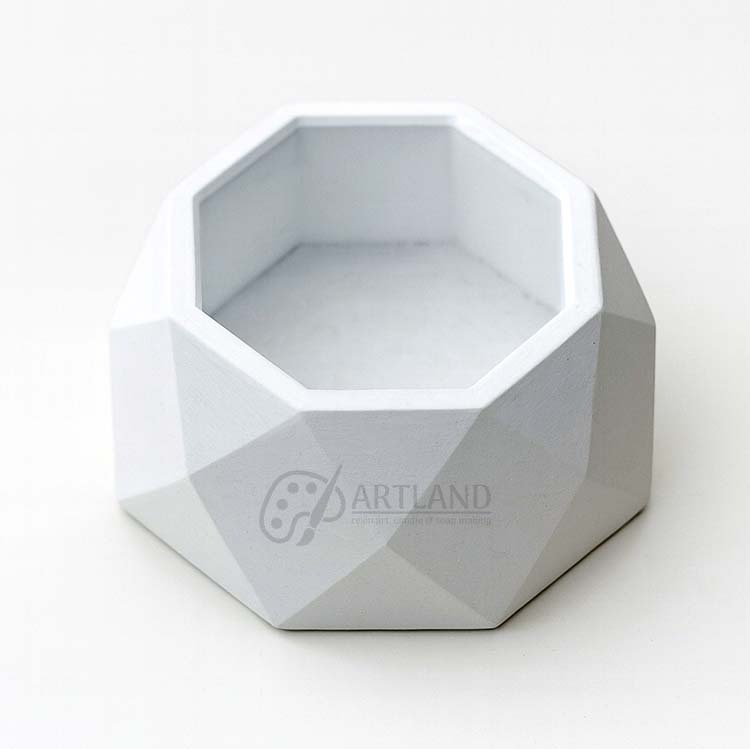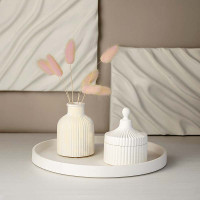Gypsum or Plaster of Paris, Which One Should You Use?
Posted by Bawantha Perera on 14th Aug 2025
Gypsum vs Plaster of Paris, Which One Should You Use for Your Craft Projects?
If you create small flower pots, candle holders, statues, or decorative items, you’ve likely worked with Gypsum or Plaster of Paris (POP). At first glance they seem alike, but they differ in setting time, strength, and surface finish. Choosing the right one can save you effort, cost, and disappointment. Both materials are affordable and practical alternatives to eco resins or Jesmonite, though each comes with a few limitations.
What They Are?
Gypsum: A natural mineral (calcium sulfate dihydrate). In craft use, it’s ground into a powder you mix with water. Sets slower, giving more working time. Depend on the brand and grade, color of the gypsum from white to off white.
Plaster of Paris (POP): Made by heating gypsum to remove part of its water content. It is a very fine powder that captures fine details and sets quickly. Usually white in color.
Water-to-Powder Ratios & Setting Time:
Important: By weight (Water : Powder)
| Consistency |
Gypsum (Water : Powder) |
Gypsum Setting Time |
POP (Water : Powder) |
POP Setting Time |
| Thick Paste | 35g : 100g | 20–25 mins* | 40g : 100g | 5–7 mins* |
| Workable Paste | 45g : 100g | 25–30 mins* | 45g : 100g | 6–10 mins* |
| Pourable Slurry | 50g : 100g | 30–35 mins* | 50g : 100g | 8–12 mins* |
| Thin Slurry | 65g : 100g | 35–40 mins* | 65g : 100g | 10–15 mins* |
Important: Setting times are estimates and vary with water ratio, additives, temperature, humidity, and material freshness/storage conditions. Less water or accelerators speed setting; more water, retarders, or old/moist powder slow it down. Test small batches first.
Gypsum Consistencies, Uses & Limitations
- Thick Paste
Uses: Hand molding, sculpting, patching, and filling gaps. Good for larger decorative pieces where strength matters.
Limitations: Hard to pour into molds, may trap bubbles. Needs careful mixing to avoid lumps. - Workable Paste
Uses: Casting small pots, tiles, ornaments, and medium-relief designs. Versatile for general projects.
Limitations: Doesn’t capture ultra-fine detail compared to slurry. Longer setting time than POP. - Pourable Slurry
Uses: Casting in silicone molds with good detail, candle holders, trays, or statues.
Limitations: More water reduces final strength. May need reinforcement (fibers or binders) for durability. - Thin Slurry
Uses: Intricate molds, fine coatings, or skim layers on surfaces.
Limitations: Weak when used for stand-alone pieces. Extended drying time due to water content.
Plaster of Paris (POP) Consistencies, Uses & Limitations
- Thick Paste
Uses: Quick patching, fast sculpting of small forms, and repairs.
Limitations: Sets very quickly, leaving little working time. Hard to shape once it begins to stiffen. - Workable Paste
Uses: Best all-round choice for small decorative items, ornaments, and medium-detail molds. Captures decent detail while still manageable.
Limitations: More brittle than Gypsum in larger casts. Needs sealing for long-term durability. - Pourable Slurry
Uses: Ideal for detailed mold casting, candle holders, figurines, and home décor pieces. Captures fine textures well.
Limitations: Weakens if mixed with too much water. May need additives for strength and chip-resistance. - Thin Slurry
Uses: Very fine molds, surface finishing, or coating over textured surfaces.
Limitations: Very fragile once dry. Often requires sealing or reinforcement. Best for decorative, not functional, items.
Effect of Water Amount on Setting Time:
- Less water → faster set, stronger cast.
- More water → slower set, weaker final strength.
- Gypsum: ~20–40 mins set (depending on ratio & additives). More water = slower set, weaker final strength
- POP: ~5–15 mins set (can extend with retarders). Too much water makes it brittle
Ideal Uses
Gypsum: Large flower pots, thick candle holders, statues, wall plaques, projects needing strength and slower setting.

POP: Mini pots, tealight holders, detailed figurines, molds with fine patterns, quick batches.

Pros & Cons for Artists
Gypsum:
✅ Longer working time (good for beginners or large projects)
✅ Stronger when set, less brittle
❌ Less detail capture compared to POP
POP:
✅ Very fine detail reproduction
✅ Smooth finish, easy to sand and paint
❌ Brittle and chips easily if thin
❌ Short working time, stressful for beginners on big projects
Quick Modifications (Basic)
- Slow POP setting: Add 0.1–0.2% cream of tartar, citric acid, or borax.
- Strengthen POP: Reduce water, add PVA glue, fine sand, or cement.
- Speed up gypsum setting: Use warm water or add a small amount of sodium sulfate.
Storage Tip: Always store in a sealed, moisture-proof container away from humidity. If the powder feels warm, clumpy, or heavy compared to fresh stock, it’s likely absorbed moisture and won’t perform as well.
Both Gypsum and Plaster of Paris (POP) are versatile materials for artists and craft makers, but each has its own strengths. Gypsum offers more working time and strength, making it ideal for larger or thicker pieces. POP captures fine details and sets quickly, perfect for smaller, intricate projects. Choosing the right one,and adjusting it with the right ratio, additives, or techniques, will help you get the best results for your creations.

